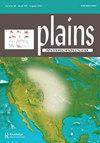Plant remains and associated insects from the Millipede site (13ML361), a burned earthlodge in southwest Iowa
Q2 Social Sciences
引用次数: 4
Abstract
The Millipede site is a Nebraska variant (Central Plains tradition) lodge dating to ca. AD 1300. The structure had burned, preserving a rich array of plant remains and insects. Elm was the principal wood used in lodge construction and hophornbeam (ironwood) was also heavily employed. Maize (mostly 10-row) was plentiful, and common beans also were present. Over 3,600 goosefoot (Chenopodium cf. berlandieri) seeds were recovered, most of which derive from a domesticated variety. Other abundant native domesticated plants included sumpweed and tobacco. Charred insect larvae, mostly darkling beetles (false wireworms), were associated with food remains in the bottom of an open storage pit and on the lodge floor. We conclude that the lodge’s residents vacated and intentionally burned the structure. Insect infestation may have contributed to the residents’ decision to burn the lodge, but burning also might have formed part of a closing ritual associated with decommissioning the dwelling.千足虫遗址(13ML361)的植物残骸和相关昆虫,这是爱荷华州西南部一个被烧毁的土屋
千足虫遗址是内布拉斯加州变体(中原传统)小屋,可追溯到公元1300年左右。这座建筑被烧毁了,保存了大量的植物残骸和昆虫。榆树是小屋建筑中使用的主要木材,hophornbeam(铁木)也被大量使用。玉米(大多是10行)很丰富,普通豆类也有。发现了3600多颗鹅足(Chenopodium cf. berlandieri)种子,其中大部分来自驯化品种。其他丰富的本地驯化植物包括海苔和烟草。烧焦的昆虫幼虫,大多是黑甲虫(假丝虫),与露天储存坑底部和旅馆地板上的食物残渣有关。我们的结论是小屋的居民腾空并故意烧毁了房子。虫害可能是居民们决定烧毁小屋的原因之一,但焚烧也可能是与住宅退役有关的关闭仪式的一部分。
本文章由计算机程序翻译,如有差异,请以英文原文为准。
求助全文
约1分钟内获得全文
求助全文

 求助内容:
求助内容: 应助结果提醒方式:
应助结果提醒方式:


